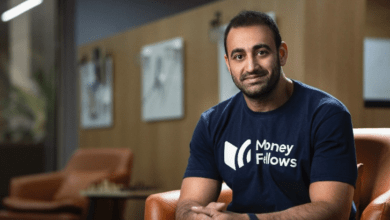London based sequence which offers apis and other tools for pricing billing and related services raised a 19m seed led by a16z ingrid lunden techcrunch
ukbased apaxlundentechcrunch: Sequence orders up $19M led by a16z for a new approach to B2B fintech
ukbased apaxlundentechcrunch
ukbased apaxlundentechcrunch: Consumers have been the focus of fintech for the past decade. Traditional services such as banking, credit and investing are getting the disruption treatment. However, there has been a growing trend to build more for the B2B sector following the larger enterprise shift in tech. Today, one of the newer hope in this space is announcing funding in advance of a Q4 public launch.
Sequence is a FinOps platform for B2B companies. It offers APIs and tools to help create responsive pricing, billing, and related services. The company has raised $19M in seed funding. This will allow it to develop its products and hire more people.
Sequence is based in London, England. The funding comes from an impressive group of investors considering that the company is yet to launch.
Andreessen Horowitz, a Silicon Valley firm that has been becoming more active in Europe and a major backer of fintech startups generally, is leading the round. 9Yards, Fin Capital, Fin Ventures and Crew Capital are also participating. Angels in the round include the founders and CEOs of Plaid and Intercom, as well as Marshmallow and Marshmallow, Lendable and UiPath, Monzo and Comply, which are still not being identified.
The reports of this seed round and specifically a16z’s involvement emerged around one year ago. Some of the attention came not only from the big-name backer, but also the track record of founders. Riya Grover (the CEO) was previously the founder of a “cloud canteen startup” called Feedr. it was sold to Compass Group. Eamon Jubbawy is the chairperson. He had also been one of the cofounders of ID verification startup Onfido. However, funding was still not closed and the startup ended up with more investors and a larger capital.

Image Credits: Liz Isles / Liz Isles under a CC BY 2.0 license.
A small note about valuation: While earlier reports had placed Sequence’s value at between $50 million and $60 million, Grover stated last week in an interview that Sequence would not disclose that figure. It’s important to highlight the possible factors that could be affecting Sequence’s valuation. One, the “cost-of capital” has increased in the past year. This has put pressure on overall valuations. Sequence, however, has also launched its private beta, and is now disclosing some early users like Deliveroo and Pipe.
Modern Treasury, Paddle, and Stripe have made it possible for digital businesses, which may not be at their core billing and payments companies, to use APIs to integrate more modern payments, reconciliation, and revenue-related services into the financial stack. Sequence is not only targeting all these opportunities, but a specific market segment.
It’s one thing for a company that makes it easier to integrate a payment flow into a product. Businesses now have a wide range of options if this is what they want. Sequence’s goal is to make it as simple as possible to create pricing and payment services that are more tailored to customers and at a specific moment. This is similar to what businesses do with e-commerce transactions. This is because B2B sales have always required a certain level of personalization and responsiveness. While in the traditional sense, salespeople are able to make decisions on the fly to offer that, more sophisticated automation tech offers the possibility to deliver a similar experience in a scaled manner when it comes pricing products and payment options.
Sequence achieves this by leveraging transaction data and payments that customers may already have in their systems, but aren’t able to use or parse. This is done through integrations to third party apps such as Salesforce, HubSpot and NetSuite. It focuses on the two main ways businesses can pay each other for goods or services, namely bank payments and debits.
Sequence and its investors believe that Sequence is an early adopter of building payment software that allows businesses capture real-time data and feeds that into dynamic pricing or payments flows.
Sequence is also built using “low code”, which means that developers don’t have to create, test, and ship changes. Instead, Sequence uses more accessible tools such as spreadsheets and graphic interfaces.

She stated that in a B2B environment, it is important to have an interface that does not always depend on developers when building new products or pricing plans. “We empower operators to empower themselves.”
Low-code or no-code software is often described as being more efficient. It also helps non-technical users get more involved with digital products. However, it’s taking on a more practical and fiscally-minded role: At a time when companies are reviewing their spending on new product and projects, and how they allocate their talents resources, billing and payments are also being reexamined.
Sequence quotes Notion Capital figures that show that today’s B2B businesses spend an astonishing 7% to 9 percent of their revenue on billing and payments infrastructure. This includes software and SaaS investments as well as the engineers needed to implement them.
Seema Amble, a partner in Andreessen Horowitz, stated that “we’ve seen an urgent pain point and therefore compelling opportunity around automation and managing payments and financial workflows.” The Sequence team impressed us with their strong team and initial customers who were excited about the vision.



